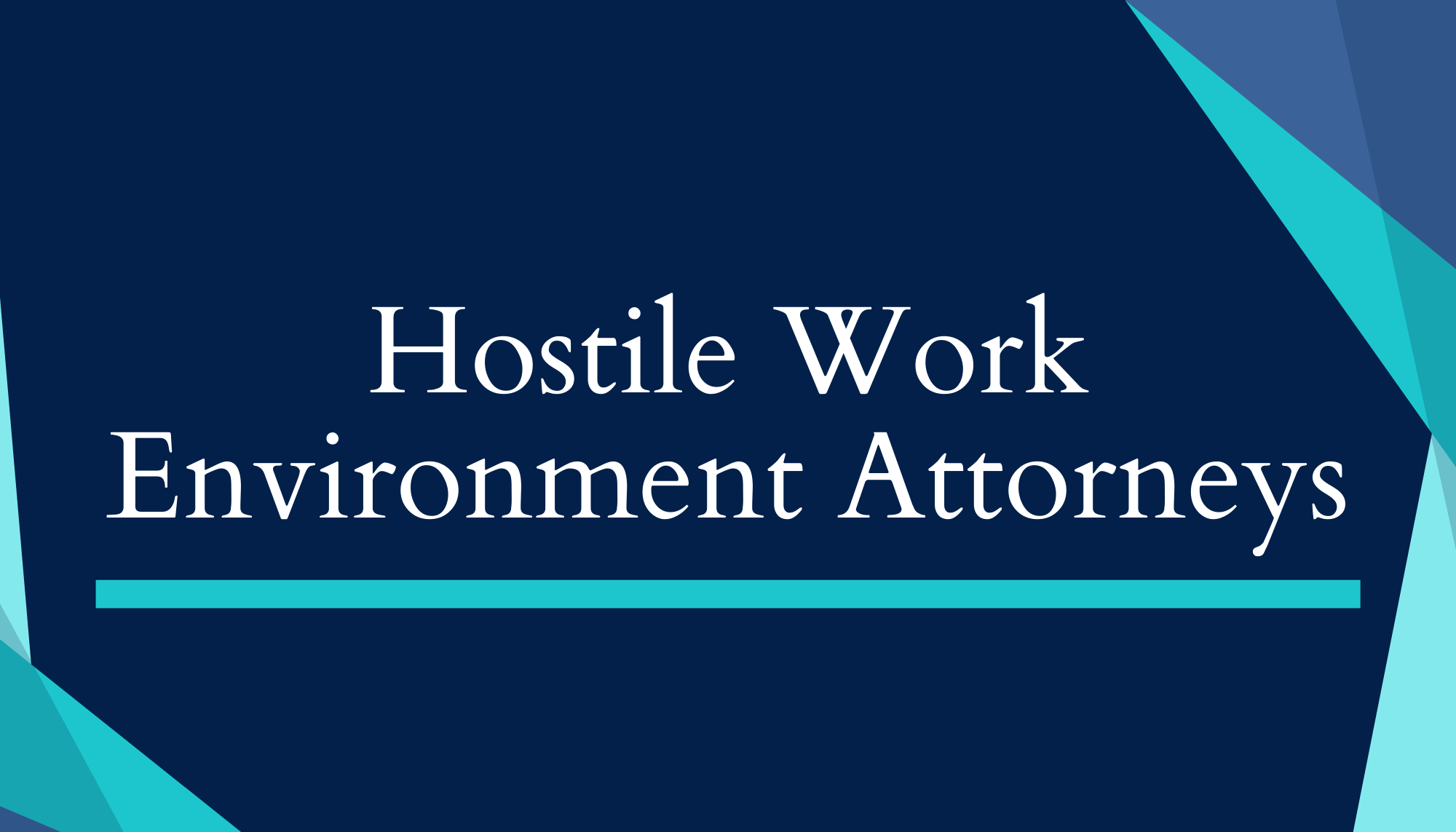Hostile Work Environment
Unwanted workplace conduct that is severe or persuasive can give rise to a hostile work environment claim under federal law. Whether the harassment is sexual, race-based, or otherwise unlawful, contact us.

Award Winning Hostile Work Environment Attorneys




Schedule A Consultation
The U.S. Supreme Court has determined that a hostile work environment exists when the workplace is permeated with discriminatory intimidation, ridicule, and insult that is sufficiently severe or pervasive to alter the conditions of an employee’s employment and create an abusive working environment. Importantly, the unfair treatment must be motivated, at least in part, by a protected category, such as a worker’s race, national origin, gender, disability, sexual orientation, age, religion, or pregnancy. It is also unlawful for an employer to create or allow a hostile work environment against an employee in retaliation for the employee complaining about unlawful conduct in the workplace.
A hostile work environment is sometimes referred to as an intimidating work environment, hostile workplace, workplace harassment, abusive work environment, or offensive work environment. The person or persons responsible for creating the hostile work environment can be a supervisor, co-worker, or even a non-employee, such as a customer or a contractor. Victims of a hostile work environment can file a lawsuit against their employer or former employer.
Below is information about Cantrell Schuette, P.A. hostile work environment attorneys, examples of hostile work environment cases we’ve handled, and Frequently Asked Questions about hostile work environment and workplace harassment claims.
WHY HIRE CANTRELL SCHUETTE, P.A.
You should always hire an attorney who specializes in the area of law you need. At Cantrell Schuette, P.A., our attorneys are more than specialists – they are leaders in the hostile work environment field. For example:
- Our attorneys are award-winning, including most with “AV” rating by Martindale Hubbel (a peer-reviewed rating) and honored by Super Lawyers (a peer-reviewed rating). Clients are regularly referred to us by other attorneys.
- Our attorneys have real trial experience. All our other attorneys have also handled a significant number of trials and/or arbitrations.
- We have many employment lawyers who specialize hostile work environment claims. In fact, some of our attorneys have written extensively on matters of employment law and discrimination and regularly give training seminars on those subjects to companies, HR Directors, and other attorneys.
We also do not rest on our laurels. Every month our attorneys engage in educational panels aimed a staying abreast of employment law legal developments and cutting-edge practices. In short, Cantrell Schuette, P.A. consists of highly skilled employment law attorneys who have dedicated their careers to helping clients just like you.


WHAT WE HANDLE
We handle all employment law matters, focusing on representation of plaintiffs. We represent clients in all forms of hostile work environment and harassment claims. The harassment may be based on a number of protected classes, such as sex, sexual orientation, age, race, national origin, religion, and disability. We represent clients from the beginning of the EEOC process all the way through trial.
Our employment law practice areas include, in addition to hostile work environment claims, the following:
- Discrimination, Harassment, and Retaliation
- Non-Competes
- Breach of Contract
- Employment Law Counseling
- Bonuses and Commissions
- Wage and Hour
- Sexual Harassment
- Whistleblowers
Here are just a few examples of successful cases we’ve handled:
- Successfully resolved unlawful retaliation claims on behalf of a recruiter in the trucking industry, obtaining a several hundred thousand settlement for damages and fees.
- Successfully obtained a high-six-figure settlement in a single-plaintiff race discrimination, harassment, and retaliation case involving an employee who was threatened with a noose.
- Successfully obtained a mid-six-figure settlement in single-plaintiff disability discrimination, harassment, and retaliation case against a hospital where an employee was terminated because she missed too many days while receiving cancer treatment.
- Successfully obtained a mid-six-figure settlement in a single-plaintiff sexual harassment and retaliation case where the female employee was shown graphic pictures by a male co-worker and was forced to resign by her employer after she complained to management.
- Successfully obtained a mid-six-figure settlement in a single-plaintiff race discrimination, harassment, and retaliation against an employer where the employer forced the employee to resign after he complained about race discrimination.
- Successfully obtained a six-figure settlement in single-plaintiff race discrimination, harassment, and retaliation case involving an employee who was forced to resign after he reported seeing a noose to his employer.
- Obtained a complete defense verdict on behalf of a national hospital management company following a two-day jury trial in a case where a former employee alleged unlawful termination under the Family and Medical Leave Act (FMLA).
- Obtained a complete defense verdict in federal court through a motion for summary judgment and oral argument on behalf of a hospital in a case where a former employee alleged unlawful retaliation under the FMLA.
FREQUENTLY ASKED QUESTIONS
Hostile work environment claims, also known as workplace harassment claims, are generally governed by:
- Title VII of the Civil Rights Act of 1967
- Age Discrimination Act of 1967 (ADEA)
- Americans with Disabilities Act of 1990 (ADA)
Harassment can be a form of discrimination, prohibited by federal law.
To file a hostile work environment lawsuit, an individual must first file a complaint with the Equal Employment Opportunity Commission . Individuals speak with an employment attorney to assist with filing an EEOC complaint , known as a “Charge of Discrimination”.
Not all bad work experiences, however, are sufficient to file a lawsuit for hostile work environment. In fact, most are not.
Under the standard laid out by the U.S. Supreme Court, a hostile work environment only exists when “the workplace is permeated with discriminatory intimidation, ridicule, and insult, that is sufficiently severe or pervasive to alter the conditions of an employee’s employment and create an abusive working environment.” Harris v. Forklift Systems, Inc., 510 U.S. 17, 21, 114 S. Ct. 367, 370 (1993)
The unlawful conduct must be based, at least in part, on an individual’s race, color, religion, sex (including sexual orientation, gender identity, or pregnancy, national origin, age (40 or older), disability, or genetic information (including family medical history). While sexual harassment is the most common form of harassment that leads to hostile work environment claims, harassment based on any protected category can be unlawful.
The law also prohibits harassment against individuals in retaliation for complaining of unlawful conduct, filing a complaint with the EEOC, testifying, or participating in an investigation or lawsuit relating to anti-discrimination laws.
The determination of whether a hostile work environment or harassment is so bad that it is unlawful is made on a case-by-case basis. Petty slights, annoyances, and isolated incidences (unless extremely serious) are not considered unlawful.
The EEOC and court cases provide examples of conduct that can rise to the level of unlawful hostile work environment, including:
- Offensive jokes, slurs, epithets, or name calling
- Physical assaults, including unwanted touching
- Intimation
- Ridicule or mockery
- Insults or humiliation
- Offensive objects or pictures
- Interference with work performance
You should ask the harasser to stop their unwanted conduct. You should also report the conduct to your supervisor or HR department, ideally in writing.
If the conduct is particularly severe or offensive, or your employer does not take action to remedy the unwelcome harassment, you should consult with an employment attorney immediately. No worker should be subject to unlawful harassment or hostile work environment. For a free consultation, contact us at (877) 858-6868 or coordinator@caklegal.com.
Yes. A claim for unlaw hostile work environment or harassment is not limited to conduct by an employee’s supervisors or company owners. It is well established that employers can also be liable for unlawful harassment by non-management co-workers and even third parties, including customers, potential customers, and independent contractors.
Specifically, employers can be liable for harassment by non-management employees or non-employees over whom it has control (for example, contractors or customers on the company premises), if:
- The employer knew or should have known about the harassment; and
- The employer failed to take prompt and appropriate corrective action.
Put differently, one court stated that an “employer may be found liable for the harassing conduct of [third-parties] if the employer fails to take immediate and appropriate corrective action in response to a hostile work environment of which the employer knew or reasonably should have known.” Watson v. Blue Circle, Inc., 324 F.3d 1252, 1258 n. 2 (11th Cir. 2003)
One famous judge even explained the rationale by using the analogy of an employer managing a macaw bird on its premises:
Indeed, it makes no difference whether the actor is human. Suppose a patient kept a macaw in his room, that the bird bit and scratched women but not men, and that the Hospital did nothing. The Hospital would be responsible for the decision to expose women to the working conditions affected by the macaw, even though the bird (a) was not an employee, and (b) could not be controlled by reasoning or sanctions. It would be the Hospital’s responsibility to protect its female employees by excluding the offending bird from its premises.
Dunn v. Wash. County Hosp., 429 F.3d 689, 691 (7th Cir. 2005)
Point being employers are not allowed to ignore unlawful harassment or a hostile work environment. Complaints must be taken seriously and remedied, regardless of the source of the unlawful harassment. If you believe you may be subject to unlawful harassment, contact us for a free, confidential consultation at (877) 858-6868 or coordinator@caklegal.com.
Yes. A claim for unlaw hostile work environment or harassment is not limited to conduct by an employee’s supervisors or company owners. It is well established that employers can also be liable for unlawful harassment by non-management co-workers and even third parties, including customers, potential customers, and independent contractors.
Specifically, employers can be liable for harassment by non-management employees or non-employees over whom it has control (for example, contractors or customers on the company premises), if:
- The employer knew or should have known about the harassment; and
- The employer failed to take prompt and appropriate corrective action.
Put differently, one court stated that an “employer may be found liable for the harassing conduct of [third-parties] if the employer fails to take immediate and appropriate corrective action in response to a hostile work environment of which the employer knew or reasonably should have known.” Watson v. Blue Circle, Inc., 324 F.3d 1252, 1258 n. 2 (11th Cir. 2003)
One famous judge even explained the rationale by using the analogy of an employer managing a macaw bird on its premises:
Indeed, it makes no difference whether the actor is human. Suppose a patient kept a macaw in his room, that the bird bit and scratched women but not men, and that the Hospital did nothing. The Hospital would be responsible for the decision to expose women to the working conditions affected by the macaw, even though the bird (a) was not an employee, and (b) could not be controlled by reasoning or sanctions. It would be the Hospital’s responsibility to protect its female employees by excluding the offending bird from its premises.
Dunn v. Wash. County Hosp., 429 F.3d 689, 691 (7th Cir. 2005)
Point being employers are not allowed to ignore unlawful harassment or a hostile work environment. Complaints must be taken seriously and remedied, regardless of the source of the unlawful harassment. If you believe you may be subject to unlawful harassment, contact us for a free, confidential consultation at (877) 858-6868 or coordinator@caklegal.com.
Yes. As reiterated by the EEOC , unlawful harassment may occur without economic injury to, or discharge of, an employee.
To establish a claim for unlawful discrimination or hostile work environment, a plaintiff must have suffered an “adverse employment action”, such as demotion, reduction in pay or hours, or termination. Courts, however, also consider a constructive discharge as an adverse employment action.
The standard is very high for establishing a constructive discharge. To successfully claim constructive discharge, a plaintiff must demonstrate “that working conditions were so intolerable that a reasonable person in [his or her] position would have been compelled to resign.” Hipp v. Liberty Nat. Life Ins. Co., 252 F.3d 1208, 1231 (11th Cir. 2001)
With that said, it is certainly easier to establish a hostile work environment or unlawful harassment claim if an individual did not quit their job. That is because to prove a constructive discharge occurred, “the plaintiff must demonstrate a greater severity or pervasiveness of harassment than the minimum required to prove a hostile working environment. Landgraf v. USI Film Products, 511 U.S. 244, 114 S. Ct. 1483.
As a pre-requisite to filing a hostile work environment claim in court, you must first file a complaint with the EEOC. The complaint filed with the EEOC is known as a “Charge”. After a Charge is filed, the EEOC will generally notify the employer within 10 days and provide them an opportunity to respond to the Charge.
Details of the EEOC process can be found here: What You Can Expect After a Charge is Filed | U.S. Equal Employment Opportunity Commission (eeoc.gov)
Once an EEOC investigator has completed the investigation, the EEOC will make a determination on the merits of the charge. One of two results is possible:
- If EEOC is unable to conclude that there is reasonable cause to believe that discrimination occurred, the charging party will be issued a notice called a Dismissal and Notice of Rights. This notice informs the charging party that he or she has the right to file a lawsuit in federal court within 90 days from the date of its receipt. The employer will also receive a copy of this notice.
- If EEOC determines there is reasonable cause to believe discrimination has occurred, both parties will be issued a Letter of Determination stating that there is reason to believe that discrimination occurred and inviting the parties to join the agency in seeking to resolve the charge through an informal process known as conciliation.
If a lawsuit is filed, the process for resolution can often take one to two years before a jury trial occurs, sometimes longer. A formal mediation will also generally take place during a lawsuit. Most claims for hostile work environment resolve well before trial. If an employer is willing, however, to pay what is fair, a trial can be the best option.
At Cantrell Schuette, P.A. our employment lawyers have substantial experience with the EEOC process, hostile work environment, harassment lawsuits, and trials.
The types of remedies available for a hostile work environment claim depend on the circumstances. Generally, an employee who proves a hostile work environment claim may be able to recover money for:
- Back pay
- Benefits that would have received
- Out-of-pocket costs associated with finding new employment
- Mental anguish
- Punitive damages
- Attorney’s fees and court-related costs
Contact us for a free consultation at (877) 858-6868 or coordinator@caklegal.com. We work with clients nationwide.
Schedule A Consultation
Litigation Practice
- Breach of Contract
- Commissions & Bonuses
- Discrimination, Harassment, & Retaliation
- Employment Counseling & Litigation
- Equal Pay Act
- Executive Compensation
- Family and Medical Leave Act
- Hostile Work Environment
- Non-Competes and Employee Mobility
- Partnership Disputes & Business Divorces
- Disability Discrimination Attorney
- Pregnancy Discrimination
- Race Discrimination
- Securities & FINRA
- Sexual Harassment Attorney
- Sexual Orientation and General Identity Discrimination
- Wage & Hour
- Whistleblower



